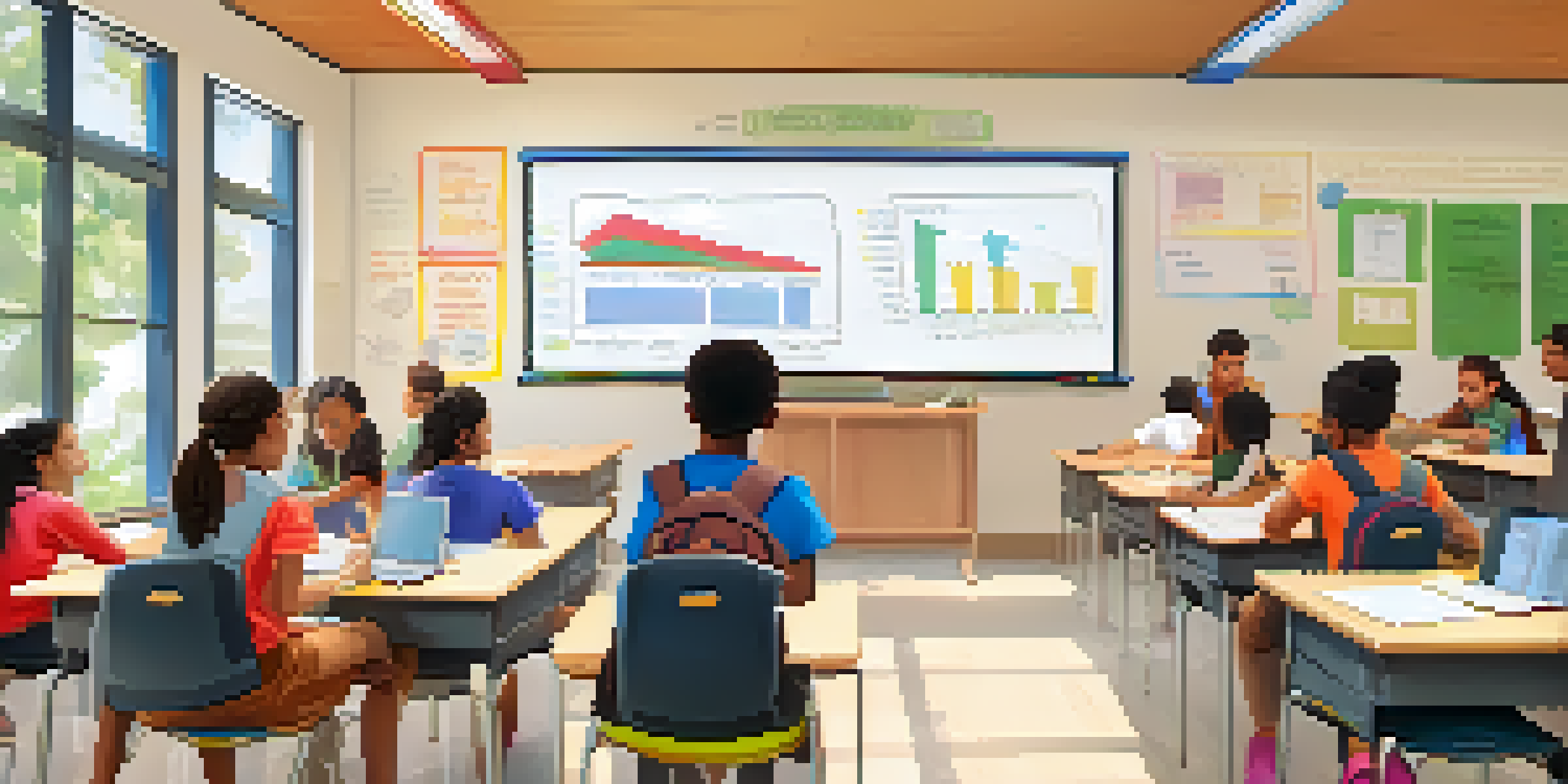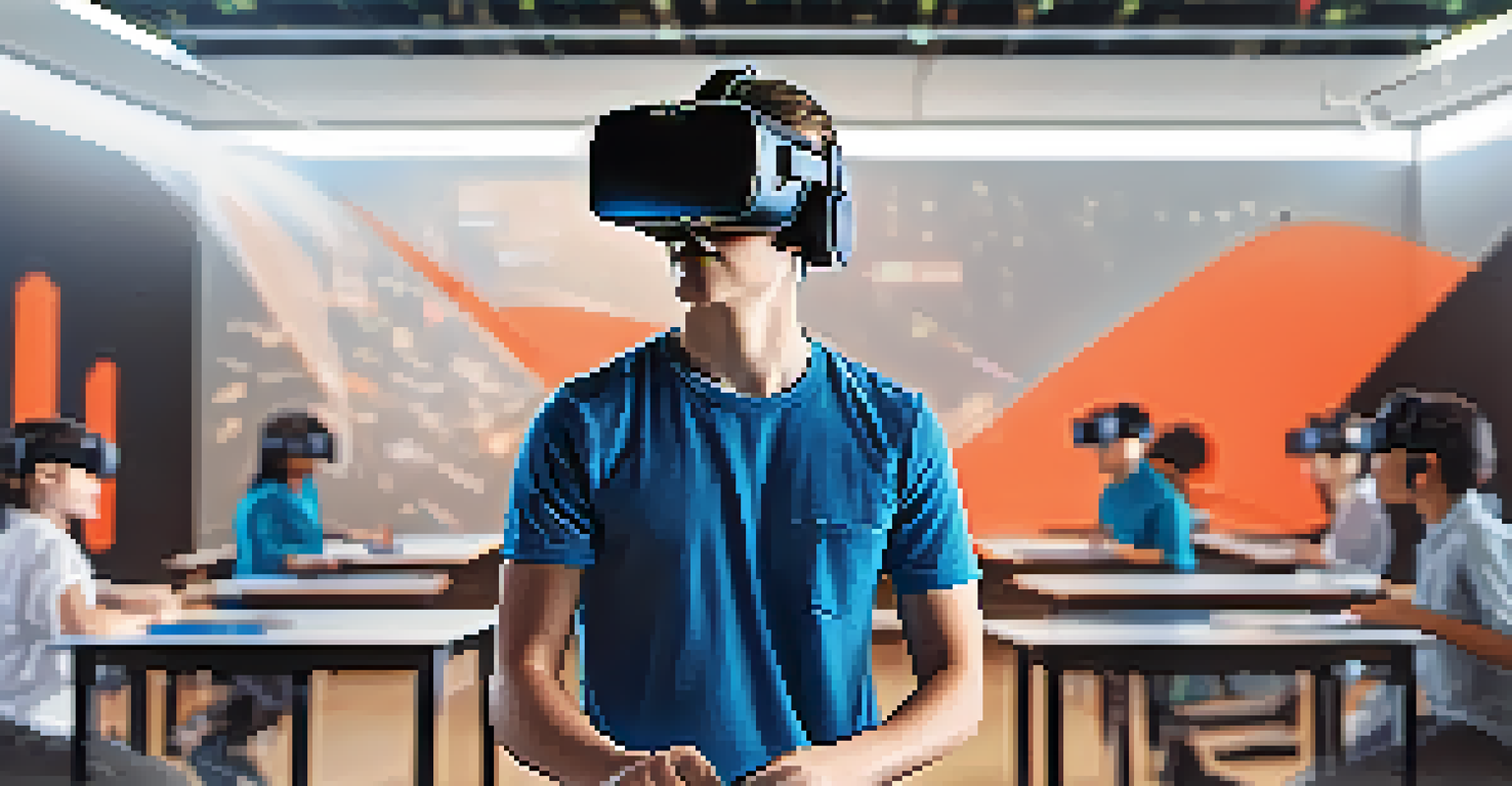Real-Time Learning: Enhancing Immediate Feedback Mechanisms

Understanding Real-Time Learning in Education
Real-time learning refers to the immediate application and assessment of knowledge as it is being taught. This approach allows students to grasp concepts more effectively by connecting theory to practice right away. For instance, think of a cooking class where students taste their dish immediately after cooking, rather than waiting until the end of the lesson to receive feedback.
Feedback is the breakfast of champions.
The essence of real-time learning lies in its ability to provide instant feedback, which is crucial for effective learning. When learners receive timely responses, they can adjust their understanding and improve their performance on the spot. This process is akin to athletes receiving immediate coaching tips during a game, allowing them to refine their skills in real-time.
Moreover, real-time learning is not just beneficial for students; instructors also gain valuable insights. By observing students' struggles and successes as they occur, teachers can tailor their guidance and support accordingly. This creates a more interactive and dynamic learning environment, fostering a deeper connection between educators and learners.
The Role of Immediate Feedback in Learning
Immediate feedback is a cornerstone of effective learning strategies. It helps learners identify their mistakes and correct them before they become ingrained habits. For example, a language learner practicing pronunciation can receive instant corrections, making it easier to improve quickly rather than waiting for a later evaluation.

This type of feedback enhances motivation and engagement, as students feel more connected to the learning process. It’s like getting a high-five from a coach after scoring a point; it reinforces positive behavior and encourages continued effort. When learners see their progress in real-time, they are more likely to stay committed to their goals.
Real-Time Learning Enhances Retention
Students receiving immediate feedback show improved comprehension and retention of material.
Furthermore, immediate feedback fosters a growth mindset, where learners view challenges as opportunities for improvement. Instead of fearing mistakes, they learn to embrace them as part of the journey. This shift in perspective is crucial for long-term success and resilience in learning.
Technologies Supporting Real-Time Learning
Advancements in technology have significantly enhanced real-time learning experiences. Tools like learning management systems (LMS) and educational apps can provide instant assessments and feedback to students. For instance, platforms that offer quizzes and interactive activities allow learners to see their results immediately, making the educational process more engaging.
The greatest danger in times of turbulence is not the turbulence; it is to act with yesterday's logic.
Moreover, technologies such as virtual classrooms and online discussion forums enable real-time interactions between students and teachers. This creates a collaborative environment where questions can be answered on the spot, fostering a sense of community. Imagine a vibrant classroom where every question is met with a prompt response, leading to a richer learning experience.
Additionally, gamification elements, such as leaderboards and badges, motivate learners by providing immediate recognition for their efforts. This combination of technology and immediate feedback not only enhances learning outcomes but also makes the process fun and enjoyable.
Challenges in Implementing Real-Time Feedback
While real-time feedback offers numerous advantages, implementing it can come with challenges. One significant hurdle is ensuring that educators are adequately trained to provide effective feedback quickly. Without proper training, teachers may struggle to give constructive feedback in the moment, which can undermine the learning experience.
Another challenge is the potential for information overload. If learners receive too much feedback at once, it can be overwhelming and counterproductive. Similar to trying to absorb too many details during a fast-paced movie, students may find it hard to focus on the key takeaways if overwhelmed.
Technology Boosts Learning Engagement
Advancements in technology facilitate real-time interactions, making learning more engaging and collaborative.
Lastly, there’s the issue of technology accessibility. Not all students may have access to the necessary devices or internet connectivity to benefit from real-time learning tools. Addressing these disparities is crucial to ensure that every learner can take advantage of the benefits that immediate feedback offers.
Best Practices for Real-Time Learning Environments
To maximize the benefits of real-time learning, educators can adopt several best practices. First, creating a supportive environment where students feel comfortable asking questions is essential. When learners know they can seek help without judgment, it encourages them to engage actively in the learning process.
Incorporating varied feedback methods is another effective strategy. This can include verbal feedback, written comments, or even digital tools that allow for instant responses. By diversifying feedback channels, educators cater to different learning styles, making the feedback more impactful.
Lastly, setting clear expectations and goals helps students understand what they should focus on during their learning journey. Clear objectives guide the feedback process, ensuring that learners know what success looks like and can measure their progress accurately.
The Impact of Real-Time Learning on Student Outcomes
Real-time learning significantly enhances student outcomes, as evidenced by various studies and examples. Students exposed to immediate feedback often demonstrate improved comprehension and retention of material. For instance, a study showed that students who received instant quizzes after lessons performed better on final assessments than those who didn’t.
Moreover, the engagement levels in real-time learning environments tend to be higher. When students see the direct impact of their efforts through immediate feedback, they are more motivated to participate actively. This creates a positive feedback loop, where increased engagement leads to better learning outcomes, which in turn fosters even more engagement.
Challenges in Feedback Implementation
Implementing real-time feedback can be hindered by training gaps for educators and technology accessibility issues.
Ultimately, the impact of real-time learning extends beyond academics. It equips students with essential skills like critical thinking and adaptability, preparing them for future challenges. These skills are invaluable in today’s fast-paced world, where the ability to learn and adjust quickly is crucial.
Future Trends in Real-Time Learning and Feedback
Looking ahead, the future of real-time learning and feedback is promising, with emerging trends set to enhance the experience further. Artificial intelligence (AI) is poised to play a significant role, providing personalized feedback tailored to individual learning styles. Imagine an AI tutor that can analyze a student's performance in real-time and adapt the curriculum accordingly, making learning even more efficient.
Moreover, the rise of immersive technologies like virtual and augmented reality (VR/AR) holds exciting possibilities for real-time learning. These tools can create simulated environments where students can practice skills and receive instant feedback in a safe space. It’s akin to training for a sports event in a virtual arena, where mistakes can be made and learned from without real-world consequences.

Lastly, as educational institutions continue to embrace hybrid learning models, the integration of real-time feedback will be crucial. Combining in-person and online learning experiences will require innovative strategies to ensure that students receive timely feedback regardless of their learning environment. This adaptability will be key to meeting the diverse needs of future learners.